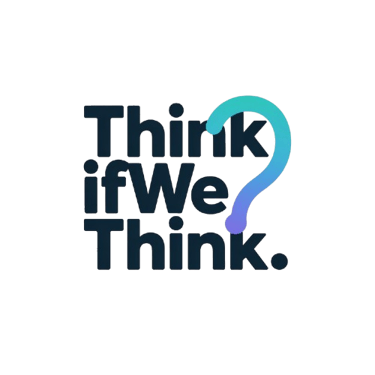Psychological Safety at Work by Amy Edmondson Explained: Key Insights, Benefits, and Real-World Applications
Discover how Amy Edmondson’s groundbreaking research on psychological safety transforms workplace performance. Learn why creating safe spaces for speaking up drives innovation, resilience, and team success in today’s fast-changing, AI-driven world.
RESEARCH PAPERS DECODED
ThinkIfWeThink
4/19/20253 min read


Decoding Amy Edmondson’s Psychological Safety at Work: A Guide for Modern Professionals
Why You Should Read This Paper
Psychological safety isn’t just a buzzword — it’s the backbone of high-performing teams in today’s fast-changing world.
Whether you’re leading a remote team, navigating AI disruptions, or fostering innovation, Amy Edmondson’s research shows why creating environments where people feel safe to speak up is mission-critical.
From preventing costly errors to unlocking creativity, this paper offers actionable lessons for anyone aiming to build resilient, adaptive organizations.
Introduction
Amy Edmondson’s 1999 paper, Psychological Safety and Learning Behavior in Work Teams, revolutionized how we understand team dynamics.
Her key insight: Teams succeed not just because of talent or resources, but because members feel safe to take risks, admit mistakes, and challenge norms.
In contrast, fear-based cultures stifle progress by silencing critical conversations.
Validated across industries, Edmondson’s work remains a blueprint for leaders navigating hybrid work, AI adoption, and rapid change.
Summary of the Original Paper
Edmondson’s research began with a paradox:
Higher-performing medical teams reported more errors than lower-performing ones.
Surprisingly, it wasn’t incompetence — it was openness.
Teams with psychological safety felt safe to admit mistakes, discuss them openly, and learn faster.
The paper outlines three pillars of psychological safety:
Candid Feedback: Open critiques of ideas without personal attacks.
Error Management: Treating mistakes as learning opportunities, not failures.
Interpersonal Risk-Taking: Encouraging "What if we tried this?" questions — even when uncertain.
Importantly, Edmondson emphasizes that psychological safety is not about being “nice” — it’s about creating a space where tough, honest conversations happen freely.
Famous Quotes from the Paper
"Psychological safety is a belief that one will not be punished or humiliated for speaking up with ideas, questions, concerns, or mistakes."
(— Amy Edmondson)
"A leader’s job is not to prevent risk but to build the capability to learn from it."
(— Amy Edmondson)
Why It Matters Today
In our post-pandemic, AI-transformed workplace, psychological safety is non-negotiable:
Remote work reduces spontaneous communication — teams need intentional trust-building.
AI tools create uncertainty about roles — employees must feel safe to raise concerns like, "Is this AI model biased?"
Inclusion efforts depend on ensuring marginalized voices are heard without fear.
Companies like Google (Project Aristotle) and Microsoft credit psychological safety with boosting innovation, collaboration, and retention.
Meanwhile, scandals like Wells Fargo’s fake accounts crisis reveal the devastating cost of fear-driven cultures.
Key Concepts Explained Simply
Interpersonal Risk-Taking:
Feeling safe to ask “dumb” questions or suggest wild ideas.
Example: A junior developer proposing an unconventional coding solution without fear of ridicule.Team Learning:
Prioritizing collective improvement over individual blame.
Example: A marketing team analyzing a failed campaign together to refine future strategies.Error Management:
Treating mistakes as data to learn from, not disasters to punish.
Example: A nurse openly reporting a near-miss medication error to improve hospital safety protocols.
Real-World Applications and Examples
Startups:
Tech companies like Etsy and Stripe use blameless post-mortems to dissect failures without finger-pointing.Healthcare:
Hospitals that foster psychological safety see fewer preventable errors and faster innovation in care models.Education:
Teachers who encourage students to voice confusion boost classroom problem-solving and critical thinking.
Case Study:
At Nokia, leadership intimidation suppressed critical feedback — contributing to the company’s decline.
In contrast, Pixar’s open culture allows even interns to critique storylines, fueling world-class creativity.
Quick Modern Update
In 2025, as AI tools like ChatGPT and other large language models reshape workflows, psychological safety is the bedrock of human-AI collaboration.
Hybrid work models further demand deliberate trust-building to replace casual hallway conversations.
5 Quick Reflection Questions
When was the last time you admitted a mistake at work? What happened?
Does your team celebrate “smart failures” or punish them?
What’s one idea you’ve withheld due to fear of judgment?
How does your leadership respond to dissent?
What’s one small action you could take to make your next meeting safer for risk-taking?
Key Takeaways
✅ Silence is costly: Fear breeds stagnation; psychological safety fuels learning and growth.
✅ Leaders set the tone: Model vulnerability by openly sharing mistakes.
✅ Clarity + Safety = Success: Pair psychological safety with clear, ambitious goals to avoid complacency.
Short Opinion
While Edmondson’s research is transformative, many organizations misinterpret psychological safety as “no consequences.”
True psychological safety combines empathy with accountability — creating a space for growth without sacrificing performance standards.
Additionally, implementing psychological safety in hierarchical or traditional cultures (like manufacturing or finance) demands extra nuance and thoughtful leadership.
Where to Read the Full Paper
Book: The Fearless Organization by Amy Edmondson.
Original Paper: Psychological Safety and Learning Behavior in Work Teams (1999, available via academic libraries or HBR archives).
Final Thought:
In a world where disruption is constant, Edmondson’s research isn’t just about making workplaces kinder — it’s about making them future-proof.
Get in touch
Learn
Explore topics made easy for everyone here.
Share
© 2025. All rights reserved.
